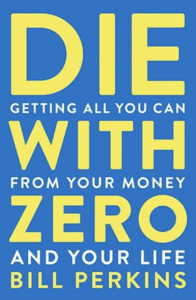Over the past six months, the portfolio has enjoyed significant growth, thanks in part to my US holdings. If you are mostly exposed to the Canadian market, you need to rethink that, as you are leaving a lot of money on the table. Lots have been written about investing in the US, and the simplest is to buy an S&P 500 ETF.
Portfolio Management
Small changes have happened, but nothing drastic. I started looking at my portfolio as a unit separate from the spousal to get an idea of my individual exposure. The exposure made sense across both portfolios, but my portfolio had significant exposure to Costco individually.
Costco just kept on rising and rising and rising, and I decided to trim a little in order to add other stocks. I don’t like to trim a winner, but I have identified a couple of other winners over time, and I prefer a stable of winners across sectors if that’s possible. Note that it’s not always possible and the MAG 7 tend to provide excellent returns.
Another consideration is that some winners were only in the spousal portfolio, and I wanted them in my portfolio. This RRSP account is not an account to which I can add money. All my RRSP contributions go into the work RRSP to get the matching contributions – it’s free money. To that end, I have done the following:
- Took profits from Costco, Apple, and Microsoft. I don’t generally like doing that, and I am doing it only to add new winners to the stable. It’s not to protect profits, as I don’t subscribe to this idea, which is akin to trimming flowers and watering weeds for most people.
- I added Broadcom, Cintas, ADP, and recently nVidia.
Broadcom, Cintas and ADP are stocks I have watched for over 2 years and assessed the business for a while (not the financial numbers but the business). nVidia is a play on AI, and it’s just the beginning. Now, you may have a personal opinion on AI, and whether you believe it’s good for humanity or not, this is about money, and AI is here to stay. The fact that government regulations, like social media, are limited or not present means that it’s early, and there is still room for nVidia to grow.
On the taxable account changes, I reduced my exposure to banks and added a new ETF called TSLY and some CSU. It’s a pure play on Tesla options, and it’s risky, but the potential return beats the banks. In the longer run, it won’t keep up with inflation, but at the moment, my expenses are all over the place with the separation, and it provides a really good income. Because Tesla is rocky but loved, it allows for the option strategy to work well, unlike some of the other Yield Max options.
The annual rate of return is how I measure performance for my holdings. Most of my US holdings are in the 20+% annual rate of return. Only a few Canadian stocks can match those, and the banks are usually around 12% – 14%, which is less than the yield I can get from TSLY. This is my current thinking, even though the ETF can fluctuate 20% month to month.

2024 has no contribution. It’s purely just stock growth. As you can see from reviewing my portfolio, it’s not a typical retirement dividend portfolio. This portfolio is a money-making machine!
In 2023, at this point in time, my portfolio year-to-date was up 11.13%, and I finished the year at 20.25%. In 2024, year-to-date, it’s up 16.30%. How will the year-end for my stocks? Not the market; that’s not relevant.



